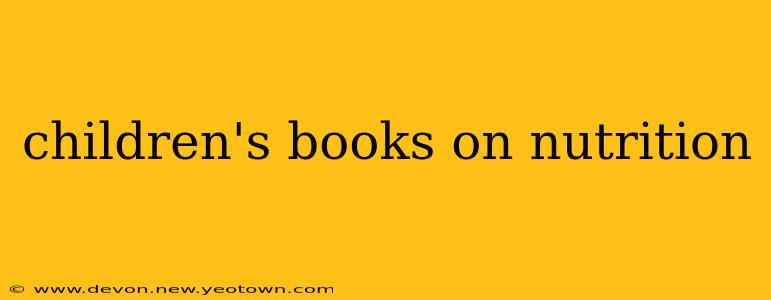As a parent, you want to instill healthy eating habits in your children from a young age. But lecturing about broccoli and avoiding sugary cereals can feel like a battle. Enter children's books on nutrition – a fun and engaging way to teach kids about the importance of healthy food and balanced diets. These aren't just stories; they're tools to empower your little ones to make informed food choices.
This isn't just a list; it's a journey into the world of captivating narratives that cleverly weave in vital nutrition lessons. We'll explore some of the best titles, uncovering why they work and how they can help your children develop a positive relationship with food. Get ready to embark on an adventure that's both delicious and educational!
What Makes a Great Children's Book About Nutrition?
Before we dive into specific titles, let's talk about what separates the truly effective books from the rest. A standout children's book on nutrition should:
- Be engaging and fun: It needs to capture a child's imagination, not bore them with facts and figures. Think vibrant illustrations, catchy rhymes, and exciting storylines.
- Teach age-appropriate concepts: A book for preschoolers will differ significantly from one designed for older elementary school children. The complexity of the information must match the child's developmental stage.
- Promote positive associations with food: The book should encourage exploration and excitement about trying new foods, rather than creating fear or pressure.
- Be relatable and realistic: The characters and situations should resonate with children, making the messages more accessible and memorable.
The Best Children's Books on Nutrition: A Delicious Selection
Now, for the main course! Let's explore some highly-rated and beloved children's books focusing on nutrition:
"The Very Hungry Caterpillar" by Eric Carle: While not explicitly a nutrition book, this classic subtly introduces the concept of a balanced diet. The caterpillar's journey of eating his way through various foods – some healthy, some not – is a perfect springboard for discussions about food choices and consequences.
"Eating the Alphabet" by Lois Ehlert: This vibrant book uses colorful illustrations of fruits and vegetables to teach children about different foods and their letters. It's a fantastic way to introduce healthy options in a playful, memorable manner.
"The Rainbow Garden" by Don and Audrey Wood: This whimsical story promotes the importance of eating a variety of colorful fruits and vegetables, connecting each color to specific nutritional benefits. It's a great way to make eating your veggies feel less like a chore and more like a vibrant adventure.
Frequently Asked Questions (FAQs) about Children's Nutrition Books
Here are some common questions parents have about finding the right books:
What age are these books suitable for?
The age appropriateness varies depending on the book's complexity and style. Many picture books are suitable for preschoolers and early elementary school children (ages 3-8). Books with more complex text and concepts may be better suited for older children. Always check the suggested age range on the book cover or description.
How can I use these books to encourage healthy eating habits?
Reading the book together is just the first step. Engage your child in discussions about the story. Ask them questions like, "What was your favorite food in the story?" or "Why do you think it's important to eat a variety of foods?" You can also use the book as inspiration for cooking or grocery shopping together.
Are there books focusing on specific dietary needs?
Yes, there are books that address specific dietary needs and allergies. You might find titles that focus on vegetarianism, veganism, or common food allergies, often with advice for parents and carers.
Where can I find these books?
You can find these books at most bookstores, both online and in physical locations. Libraries are also a great resource, often offering a wide selection of children's books on various topics.
Conclusion: Nourishing Minds and Bodies Through Storytelling
Choosing the right children's book on nutrition can be a powerful tool in shaping your child's relationship with food. By making learning fun and engaging, these books can pave the way for a lifetime of healthy eating habits. So, grab a book, cuddle up with your little ones, and embark on a delicious adventure together! Remember, it’s not just about the food; it’s about creating positive memories and building a foundation for a healthy future.

